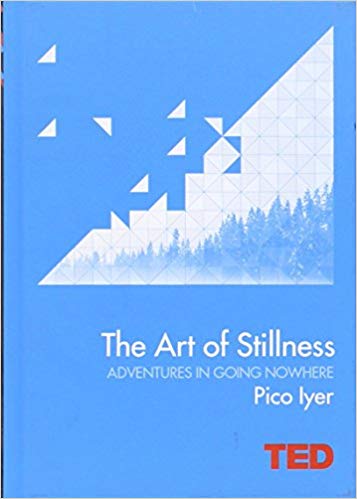

This lyrical and inspiring book expands on a new idea, offering a way forward for all those feeling affected by the frenetic pace of our modern world. In 2013, Pico Iyer gave a blockbuster TED Talk. Ultimately, Iyer shows that, in this age of constant movement and connectedness, perhaps staying in one place is a more exciting prospect, and a greater necessity than ever before.

Paints a picture of why so many-from Marcel Proust to Mahatma Gandhi to Emily Dickinson-have found richness in stillness. Growing trends like observing an “Internet Sabbath”-turning off online connections from Friday night to Monday morning-highlight how increasingly desperate many of us are to unplug and bring stillness into our lives. These aren’t New Age fads so much as ways to rediscover the wisdom of an earlier age. He reflects that this is perhaps the reason why many people-even those with no religious commitment-seem to be turning to yoga, or meditation, or seeking silent retreats. Iyer also draws on his own experiences as a travel writer to explore why advances in technology are making us more likely to retreat.


a TED Books release-Iyer investigate the lives of people who have made a life seeking stillness: from Matthieu Ricard, a Frenchman with a PhD in molecular biology who left a promising scientific career to become a Tibetan monk, to revered singer-songwriter Leonard Cohen, who traded the pleasures of the senses for several years of living the near-silent life of meditation as a Zen monk. There’s never been a greater need to slow down, tune out and give ourselves permission to be still. Why might a lifelong traveler like Pico Iyer, who has journeyed from Easter Island to Ethiopia, Cuba to Kathmandu, think that sitting quietly in a room might be the ultimate adventure? Because in our madly accelerating world, our lives are crowded, chaotic and noisy. The Art of Stillness can thus seem to serve the distractions it purports to escape.A follow up to Pico Iyer’s essay “The Joy of Quiet,” The Art of Stillness considers the unexpected adventure of staying put and reveals a counterintuitive truth: The more ways we have to connect, the more we seem desperate to unplug. As with all therapeutic prescriptions, the value of the “cure” is haunted by the inevitable need to return to what made us sick. Seeing it offered as a panacea for corporate stagnation is even more depressing. Seeing the revolutionary power of stillness reduced (as it must be in such a project) to a spa treatment (I am being slightly unfair but not by much) is dispiriting. And yet the whole endeavor-the packaging, the bite-sized wisdom, the benevolent and bloodless style of self-help-sets my teeth on edge. The advice is sensible and likely to be valuable to anyone who takes it. Its subject is the virtues of retreat and “sitting still” in an “age of distraction.” Much useful advice is offered, generally in the form of anecdotes about famous or successful people (or about Iyer himself) spending time in monasteries or observing some sort of Sabbath, either traditional or “Internet.” The benefits are said to include such measurable goods as lower blood pressure and a “level of happiness” hitherto uncharted by MRI scans.
THE ART OF STILLNESS PDF DOWNLOAD SERIES
This very brief book is a “TED original,” one of a series of “short books about big ideas” offered by the nonprofit best known for its talks delivered in the style of a Silicon Valley product launch.


 0 kommentar(er)
0 kommentar(er)
